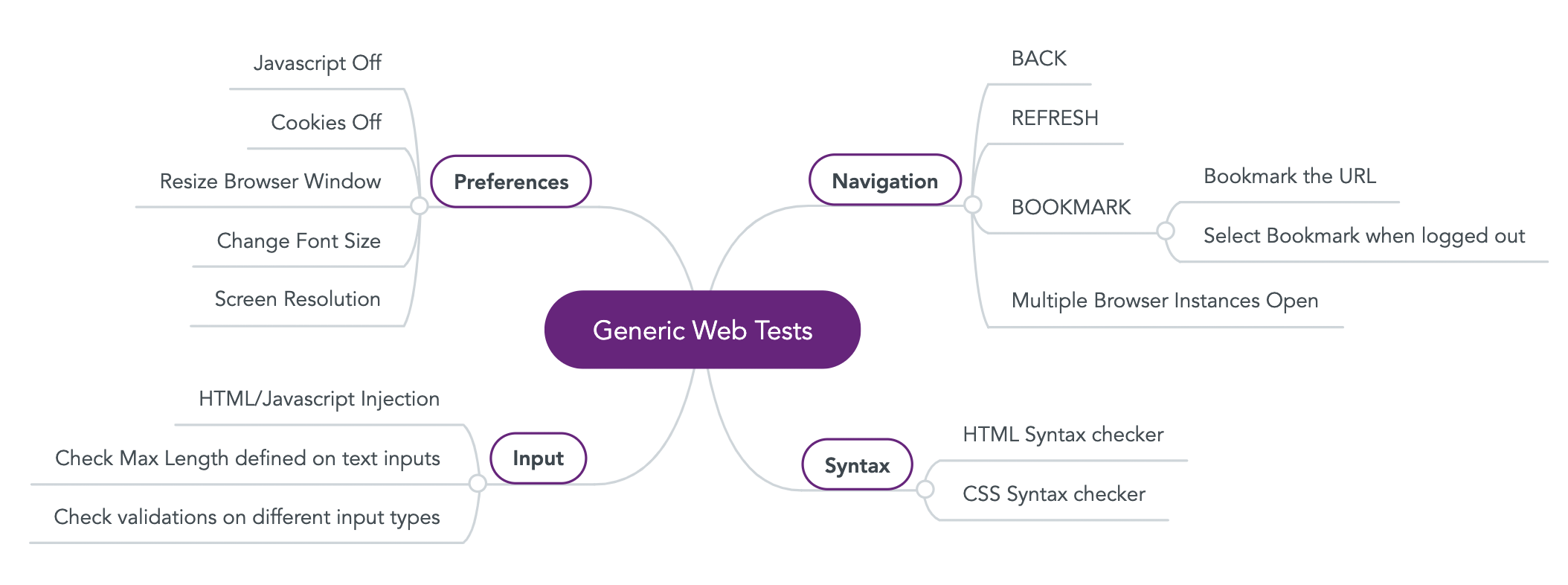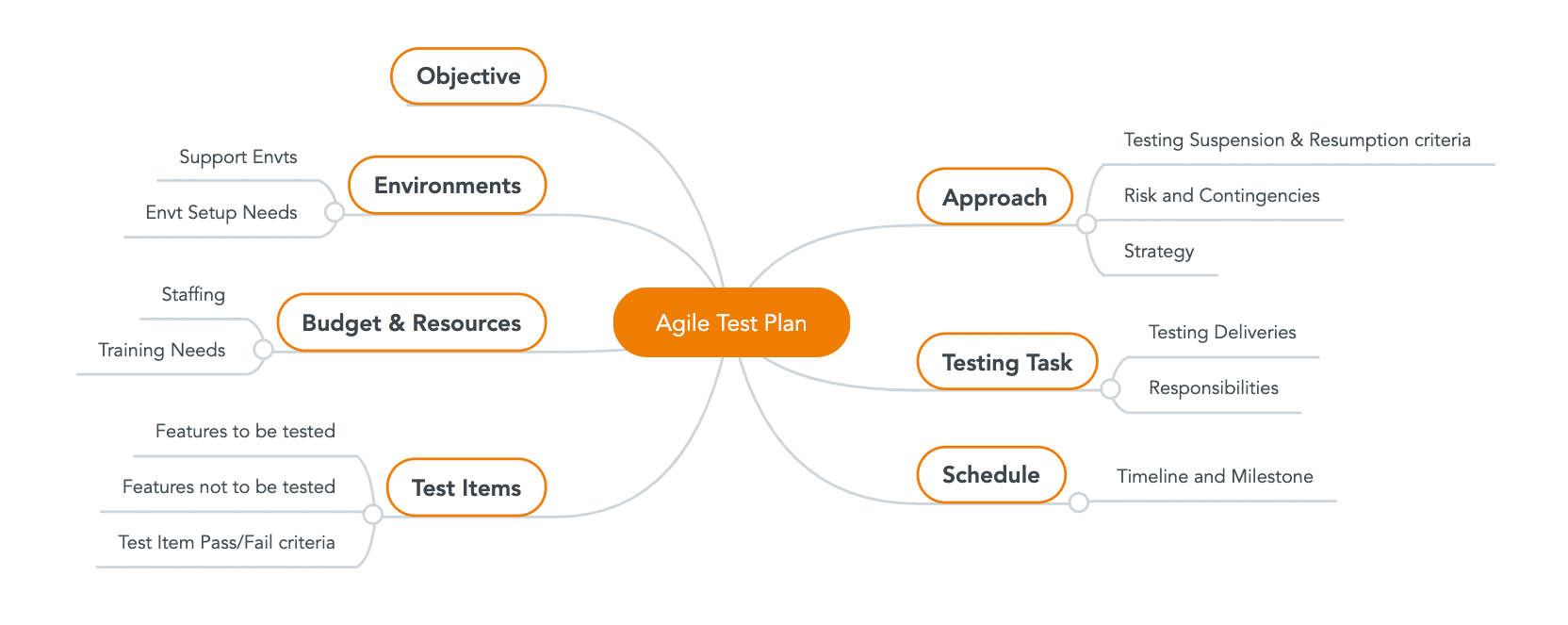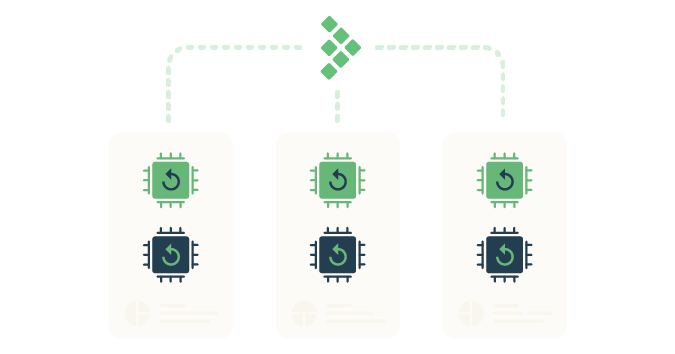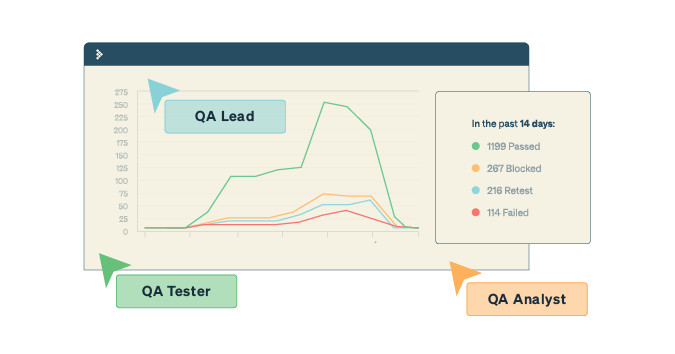This is a guest post by Nishi Grover Garg.
Mind maps are a creative way of gathering ideas around a central theme and categorizing them in concrete branches. Mind maps can be useful for both personal and professional life as an organization and visualization technique. They’re descriptive, easy and even fun.
Here we will showcase the usage of mind maps as a technique for test planning and test design. This tool’s capabilities make your documentation leaner and ideas more visual, which benefits the whole agile team.
Mind Maps as a Test Planning Technique
The most common mistake we make when creating a test plan is not involving the entire team. We go by the thoughts of a single person, and even if we later ask for a review or feedback, it may not be as effective. But if we make use of mind maps, the entire team can help generate the test plan in a single go with all the necessary details and categories, without missing out on any ideas.
Here is a sample mind map that shows all the main headings of a test plan as per the IEEE 829 standard. You can also treat this as a template and fill in the details of each of the sections to have a complete and concrete test plan in an easier way.

Test design for generic web app tests, created by Nishi Grover Garg
The mind map below shows possible feature areas and divisions for an e-commerce application. Each area can have multiple subsections and a mind map of its own to showcase the functionalities to be implemented.

Components and areas for an e-commerce application, created by Nishi Grover Garg
This is just an example, so it’s not completely detailed. You can have more sections and map out the dependencies and cross-links between different sections.
Mind Maps for Test Design
For any feature that we take up for testing, we need to think of test ideas and detailed test scenarios. Testers sometimes need a second opinion and a fresh perspective, so they try to get other stakeholders on board for reviews or walkthroughs. Mind maps can help gather everyone’s opinions in a visual manner.
Testers can generate their test ideas and have them categorized in a mind map around the central theme of the feature. The visual nature of a mind map helps them find more scenarios, see which parts are more heavily tested, and focus on main areas or branches. Once done, they can have other stakeholders take a look at it and get their opinions. This fosters brainstorming together and gathers the maximum number of ideas from the entire team.

Agile test plan, created by Nishi Grover Garg
The above examples are intended to showcase how mind maps can be used in various stages of an agile project and can help make our essential documents leaner, more visual, and more useful. Teams can also use mind maps for other activities like test strategy, creating test reports for sprints, release plans, defect taxonomy creation and release end reports.
Important Points When Creating Mind Maps
- Mind maps can be created manually using charts and colored pens or on whiteboards, and you can take a picture of it and share via email for a record of the mind map.
- You can also use a tool to create virtual mind maps. There are many open source and licensed tools available online.
- Mind maps must have short and concise points, not long sentences, to describe sections and subsections.
- You can use images, icons, and visual notations.
- All terminology used in mind maps must be easily understood and common across the team.
These tips will be helpful for your team as you try out mind maps as a useful agile testing technique. Interested in learning more about mind mapping? Watch our webinar Test Planning Simplified led by TestRail Product Manager Simon Knight on how to simplify your test planning with mind maps and heuristics so that you can accomplish more testing and ship new releases even faster.




